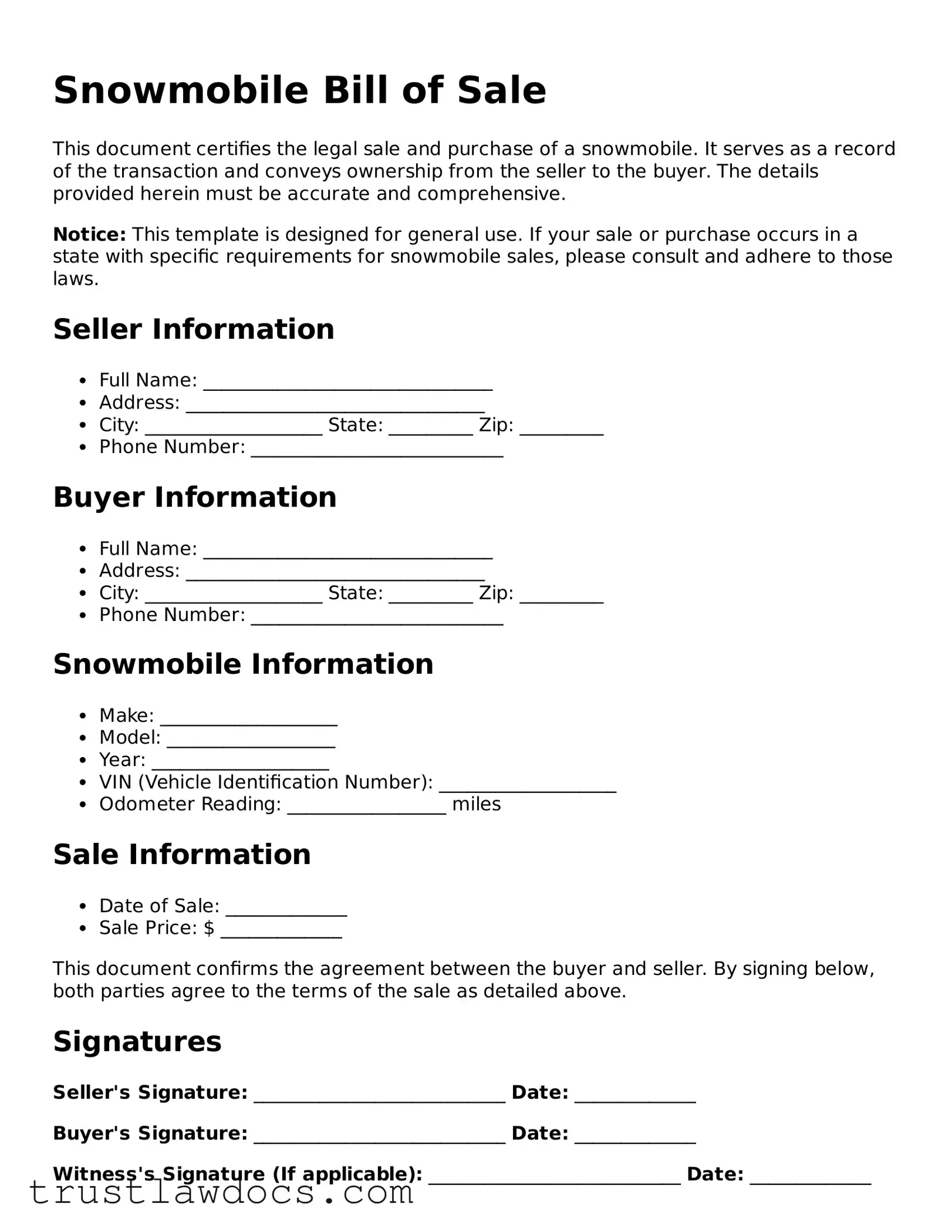The Vehicle Bill of Sale is akin to the Snowmobile Bill of Sale, in that both serve as official records of the transaction between a buyer and a seller for a specific property. In the case of a Vehicle Bill of Sale, it applies to automobiles such as cars, trucks, and motorcycles, detailing the sale's particulars such as the make, model, year, and VIN (Vehicle Identification Number), ensuring both parties have proof of transfer and ownership.
A Boat Bill of Sale resembles the Snowmobile Bill of Sale by documenting the change in ownership of a boat. This form captures similar details to those in a snowmobile sale, such as the make, model, year, and possibly the hull identification number (HIN). It also includes the sale price and any warranties or agreements made during the sale, cementing the agreement legally between buyer and seller.
The Firearms Bill of Sale is another document similar to the Snowmobile Bill of Sale. It is a formal document utilized in the private sale of guns and firearms. It typically includes specific details about the firearm being sold, such as the make, model, caliber, and serial number, alongside the personal details of both parties involved. This bill helps ensure that the transfer of ownership is recorded and lawful.
An Equipment Bill of Sale is used in transactions involving various types of equipment, making it similar to the Snowmobile Bill of Sale. This document covers sales of machinery or heavy equipment, capturing details about the items sold, the sale price, and the conditions of the sale. It acts as proof of transaction and ownership transfer, just as in the sale of a snowmobile.
The Aircraft Bill of Sale shares similarities with the Snowmobile Bill of Sale, despite the different types of property they cover. Both documents are used to record the details of a sale, including identification numbers (for aircraft, the registration number), make, model, and year, along with the terms of the sale. This ensures a legal record of the transfer of ownership from seller to buyer.
A General Bill of Sale is a broad document that can be tailored to many types of personal property sales, including snowmobiles. Unlike the more specific bills of sale, it does not necessarily require details peculiar to a type of item (like VINs for vehicles or HINs for boats) but still records the vital details of a transaction: the parties involved, the item or items sold, the sale price, and the date of sale.
The Pet Bill of Sale is specifically designed for transactions involving animals. Like the Snowmobile Bill of Sale, it outlines the details of the sale, but for pets, it may include breed, age, health information, and other pertinent details about the animal. This document also assures that the buyer understands their responsibilities towards the pet's welfare, mirroring the accountability a Snowmobile Bill of Sale establishes in terms of property ownership.
A Furniture Bill of Sale, while focused on pieces of furniture, operates under the same premise as the Snowmobile Bill of Sale. It documents the sale of items such as sofas, tables, and beds, listing their descriptions and the agreed-upon price. This ensures that the transaction is recorded in a manner that can be referred back to if disputes arise, similar to the role of a bill of sale in vehicle transactions.
Lastly, the Real Estate Bill of Sale, though dealing with real property as opposed to personal property like snowmobiles, functions in a parallel fashion by documenting the sale details. It includes information about the property sold, the parties involved, the sale price, and any terms or conditions. Like the Snowmobile Bill of Sale, it serves as a legal record of the transaction, offering protection and clarity to both buyer and seller.
